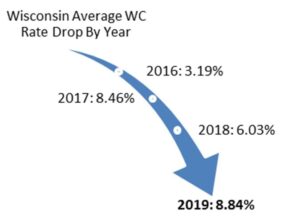How do I Apply for Life Insurance?

Applying for Life Insurance can be a very important life step. This is because you are choosing a degree of financial protection for your loved ones in case you die or are diagnosed with a terminal illness. Working out how much cover you might need isn’t complicated, but it does take time and thought, and you need to consider your finances and circumstances.
How do I start a Life Insurance application?
There are three ways: directly from insurer, through an adviser, or via your superannuation.
How to apply for Life Insurance directly
Generally speaking, the steps are:
work out how much insurance you feel you might need (as a tool to help you think about this, you can use a Life Insurance calculator or the guidelines below)
compare various insurers’ prices, cover, inclusions, and exclusions
get quotes online through various insurers
they will contact you
make a short list of insurers and choose one based on their quote, your research and their added benefits (such as flexible policies and discounts if paying annually)
call the insurer back and they will help you to apply direct
there is usually an online questionnaire as part of the application, asking for health, lifestyle and other relevant information.
How to apply for Life Insurance through an adviser
Applying through an accredited adviser is the more traditional approach. The application often takes longer, as the advisor needs to work out what level of cover by conducting a needs analysis of your circumstances and risk profile. Typically, they will then talk you through various policies and what you are covered for and excluded from.
Through your Super
Before taking out further Life Insurance, check whether you already have this type of insurance through your super. This ensures you’re not paying for insurance twice; but on the other hand you need to consider carefully if the cover provided is sufficient for your situation and needs.
Taking out Life Insurance through super means you pay the premiums from your super fund, and premiums may be tax-deductible. Sometimes however, you are given the super fund default cover, and this may not be the most suitable option for you.
Before you buy Life Insurance (either direct, adviser, or via super), by law the insurer must provide you with a product disclosure statement (PDS).
Check the PDS for:
what’s covered and what’s excluded under the policy
information on premiums and whether they change over time
waiting periods
how to make a claim
how to complain about claims process or decision
What information do I have to provide?
Different insurers will ask for differing and additional information, but in general the following information will be sought from you –
Age
Your age is one of the most critical factors in deciding your Life Insurance premiums and eligibility. This is because health risks increase as we age, and premiums increase accordingly.
BMI
In general, being overweight can impact health. That’s why many insurers choose to include your body mass index (BMI) into their calculations.
Occupation
Your occupation may affect your premium depending on the risks involved in your work. Such risks may range from the chance of accidents to the amount of time you spend sitting in a chair.
Medical and family history
This included illnesses, operations, and ongoing conditions. It’s important to be transparent and honest with your medical history and advise of any health issues you’ve experienced.
If you have not seen a GP for a while you may need to have a medical before you apply for Life Insurance.
In addition to your own medical history, you may need to provide details of family medical history (parents, grandparents, first degree relatives). For example, a history of cancer or hereditary condition (such as breast cancer or coronary artery disease) can influence your policy premiums.
Lifestyle
Insurers like to know about lifestyle habits that might affect your life expectancy, for example, if you drink alcohol, smoke or vape, how much you exercise, and whether your hobbies involve taking risks. If you regularly do high-risk activities, such as skydiving, bungee jumping, surfing, or take holidays to high-risk locations, then your premium may be affected.
It’s important to always read the application questions carefully, and to answer truthfully and completely.
How much Life Insurance do I need?
Working out how much cover you need takes time and some thought.
You should make a list of factors that can include:
total income
assets
other funds that your family receives such as government payments, savings, and your spouse’s salary
superannuation
outstanding debts including mortgage and loans
annual expenses including household and lifestyle
how much your surviving partner would need for childcare, school fees, lifestyle
Considering these factors can be a good starting point for deciding how much Life Insurance cover will be sufficient to cover your debts, expenses and to provide funds for loved ones if you die. You can also use a Life Insurance calculator to provide a general estimate to help you consider how much cover you need or speak to an insurance advisor.
How do Life Insurance premiums work?
Here are 2 common premium types:
Stepped premiums update and increase every year based on your age and risk profile. This means the cost of your insurance increases over time.
NobleOak Life Insurance products only offer stepped premiums.
Level premiums do not increase as you age. The cost depends on your age at the time you purchased the policy. The premium adjusts for inflation or changes in the insurer’s rates.
Also be aware of premium loadings – during the assessment of your application (underwriting), insurers may
apply a premium loading (a percentage on top of the standard premium rate) because of your level of health, family medical history or lifestyle.
What are the steps involved in a Life Insurance application?
Whilst the process is likely to differ a little from insurer to insurer, this is the type of process you can generally expect:
Submit an application for cover
Complete an online form or paperwork with your chosen insurer.
Answer all the questions honestly and fully.
Sign a declaration concerning the accuracy and completeness of the information you have provided (giving incorrect or misleading information risks voiding your policy or reducing what might be paid).
Medical assessment
Some insurance companies will require a medical examination before approval.
Others will just need answers about your medical history.
Your risk is assessed
The Life Insurance provider will discuss your application with their underwriting team. Underwriting is the process of considering your level of risk when providing you with Life Insurance, and whether to accept (and if so, on what terms) or reject your application.
The underwriters will assess your answers to work out the premium (cost) that you pay.
Should I combine Life Insurance cover with other products?
You may choose to take out other life insurance products such as Total Permanent Disablement (TPD), Income Protection, or Trauma Insurance in addition to life cover. Sometimes, if you choose to “bundle” products where available, premiums may be cheaper than if you purchased Life Insurance products separately.
Applying for Life Insurance is a significant step in your life. You may choose to get your own cover (directly), after carefully considering your needs and circumstances. Or you may seek professional help with an adviser. It is recommended that you seek advice about how tax applies to your situation. A Life Insurer like NobleOak can provide you with general advice and product information.
To find out more about NobleOak’s Life Insurance products call a NobleOak Life Australian based insurance team member on 1300 014 494 or get a quote online.
This is general information only and does not take into consideration your individual circumstances, objectives, financial situation, or needs.



